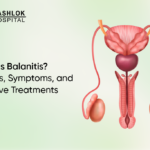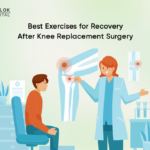
Knee pain after total knee replacement is a matter of concern, and once you know how to manage the pain, the fear subside. Total knee replacement is a surgical procedure whereby the diseased knee joint is replaced with artificial material. The knee is a hinge joint that provides motion when the thigh meets the lower leg. Having knee pain, swelling is normal after a knee surgery. Once you know the tips and tricks to manage post-operative pain, you won’t be that anxious and afraid of postoperative problems. After the first week of surgery, many people will observe pain and swelling, lowering down. There are many ways to manage pain after knee replacement surgery.
Also Read : All you need to know about – knee surgery
Five ways to manage pain after Knee replacement surgery are:
- Rest: Resting is the first and foremost important thing once you are back after a knee replacement surgery. The amount of rest you have is directly proportional to the healing rate. Pain, swelling, and over-activity are all related. The antidote to all three is the rest.
- Ice: Applying ice is one the best and natural way to reduce pain and swelling after knee replacement surgery. Ice subsides pain naturally, so it is the best way to manage post-operative pain, swelling and bruises.
- Elevate: You can elevate your legs higher than your hips. This posture helps you reduce your pain. This way, gravity will move the built-up fluid towards your heart to get rid of swelling and pain faster.
- Medication just after surgery: After the surgery, the effect of anaesthesia wears off slowly; your healthcare team can provide pain medication either orally or through an intravenous tube. Medications include a potent opiate or opioid such as morphine, fentanyl, or oxycodone and are intended only for short-term use. It’s important to note that larger doses over time can lead to physical dependence and addiction. Follow your doctor’s instructions to avoid adverse effects.
- Pain medication: Most of the time, doctors prescribe nonsteroidal anti-inflammatory drugs (NSAIDs) such as ibuprofen (Advil, Motrin) or naproxen (Aleve). In case severe pain persists, your doctor might prescribe more potent pain relievers such as tramadol (Ultram) or oxycodone (OxyContin).
Also Read : Knee Replacement Cost in India: How to Choose the Right Surgeon and Hospital
Summary
The above steps should be repeated to get rid of the pain after knee replacement. But try to control the use of NSAIDS and painkillers as they can make you an addict. The leg would still hurt months and even years after a Total Knee Replacement. As getting the bones in the leg cut off and replaced with plastic and metal. That can’t feel good! It’s quite normal to experience pain but that can be managed if you are already prepared and not afraid. Total knee replacement (TKR) till date is the most successful surgeries developed over the past decade and has enhanced the quality of life for a large number of old age groups. Visit Aashlok Hospital; we provide the best knee replacement surgeon in Delhi. Fix an appointment now!






